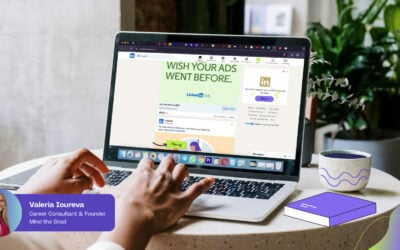
The question ‘can creativity be learned?’ has been tossed around quite a lot and there’s a reason for that. For the longest time, people thought creativity was restricted to creative people and the more ‘logical’ skills were for those who lacked creativity, but this is simply untrue.
Is creativity a skill that is a little confusing and vast? Yes. Is it an exclusive skill open to only a few? It’s certainly not. We’ll explore this in a minute but first, to answer the question …
Can creativity be learned?
Yes, it can! ‘Creativity’ is often considered a soft skill, but it’s a powerful one that can set you apart in many professional fields if you hone it right.
“But I’m not creative”
Ah, the classic “But I’m not creative” dilemma. It’s actually a common misconception. People often think of creativity in this grand, artistic sense—like you have to be a particular type of person, living a particular way, doing particular things.
In reality, creativity comes in all shapes and sizes! It’s not just about painting a masterpiece or composing a symphony. It’s problem-solving, thinking outside the box, finding new ways to approach everyday challenges.
Part of the reason people feel they’re not creative is that they might not recognise the various forms creativity can take in their lives. Creativity is in the way you tackle a math problem, come up with a unique solution at work, or even whip up a new recipe in the kitchen.
Another culprit is the fear of judgment. People worry their ideas won’t measure up, so they stifle their creative impulses. But here’s the thing: creativity isn’t about being perfect. It’s about being willing to explore, experiment, and sometimes make a glorious mess.
One reason people might shy away from embracing their creativity is the idea that it’s a fixed trait—you either have it or you don’t. But research suggests otherwise!
Imagine creativity as a muscle; the more you use it and the harder you push it, the stronger it becomes. If someone believes they lack creativity, it might simply mean they haven’t exercised that muscle enough. Just like hitting the gym to build physical strength, engaging in creative activities helps build your imaginative prowess.
Moreover, societal expectations and comparisons can play a role. If someone perceives creativity as solely reserved for the artistic elite, they might downplay their own creative endeavors, thinking they don’t measure up.
Encouraging a shift in mindset, recognising small creative victories, and embracing the idea that creativity is a journey of growth can make a significant difference. It’s about fostering a mindset that values the process as much as the end result.
So, in essence, creativity is not this elusive trait; it’s a skill that can be nurtured and developed over time.
How is ‘creativity’ a skill?
The term “creativity” can take on different nuances depending on the context, especially between the professional world and our personal lives.
In the professional world, creativity often refers to the ability to generate innovative ideas, solutions, or products that bring value to an organization or its clients. It can involve designing compelling marketing campaigns, solving complex business challenges, or developing cutting-edge technologies. In this context, creativity is often goal-oriented and focused on achieving tangible outcomes that contribute to the success of a business or project.
On the other hand, in our personal lives or outside the workplace, creativity might be more about self-expression, exploration, and enjoyment. It’s the freedom to pursue artistic endeavors, engage in hobbies, or simply approach everyday tasks with a unique flair. It’s about finding joy in the process of creation without the immediate pressure of meeting specific professional objectives.
In both contexts, creativity involves thinking differently, making connections, and bringing something new into the world. However, the emphasis and goals can vary. In the professional world, there’s often a strategic and outcome-driven aspect, while in personal life, it’s more about personal satisfaction and expression.
Ultimately, the core of creativity—unleashing imagination, solving problems, and expressing oneself—is a thread that runs through both professional and personal realms. It’s just the specific goals and expectations that might shift.
But does everyone get an equal shot?
Thing is, creativity does indeed manifest in various forms, and the abstract nature of it can sometimes make it seem challenging to pin down. It’s like trying to define the wind—it’s there, you can feel its effects, but it’s elusive.
When it comes to specific creative skills like sketching, writing, or any other craft, it’s true that people may have different inclinations or natural talents. However, having a knack for one particular aspect doesn’t mean someone lacks creativity in others.
Now, the question of whether everyone has an equal shot at creativity is nuanced. While individuals may have different starting points, the key lies in the willingness to explore and develop creative skills. It’s not about achieving perfection in a particular area but about the process of self-expression and growth.
Moreover, creativity is not a one-size-fits-all concept. What might be a creative outlet for one person could be entirely different for another. So, the equal shot at creativity comes from recognising and embracing the diverse ways it can manifest in each individual.
In essence, everyone has the potential for creativity, but the journey and the destination will look different for each person. It’s about finding what sparks your imagination and being open to the creative possibilities within that realm.
How to develop creativity as a skill
To be a creative is very much a state of mind—and a way of living. To create something new, you need to know what’s out there in the first place.
Diversify your knowledge
An easy way to do this is to consume a wide range of content. Read books, explore different genres of music, watch movies, follow various creatives on social media like TikTok. The more diverse your influences, the richer your pool of ideas becomes—regardless of which field of creativity.
You should also definitely try new things as often as you can! Experimentation is the heartbeat of creativity. Whether it’s trying out a new art style, exploring a different design software, or attempting a project outside your comfort zone, embrace the unknown.
Additionally, it’s very important to pay attention to the world around you. Observe how things work, question why they work that way, and think about how they could be improved or approached differently.
A good writer is able to capture the minute details of a range of human emotion through discovering, observing, feeling and expressing. The great thing about creativity is, it demands you to ‘live’.
Is creativity a skill used in the workplace?
Not only is it used, it’s highly valued, and we’re not talking about creative roles. It’s applicable across fields. See, creativity in the workspace relies a lot on problem-solving and coming up with innovative, out-of-the-box ideas or solutions.
To learn to flex these muscles, try this: when you have a project or problem at hand, try mind mapping and brainstorming. Do research, compare and contrasts case studies, and push your boundaries. Let your ideas flow freely, no matter how wild they might seem at first. You can always refine them later.
Collaborative environments can further improve your creative thinking. Engage with others, bounce ideas around, and be open to feedback. Sometimes, an outside perspective can fuel your creativity.
Additionally, working with constraints can be surprisingly helpful. Whether it’s a tight deadline or specific project requirements, use these limitations to fuel your creative problem-solving skills. Test your ability to adapt to this. If you’re learning to sketch, you could set milestones for yourself. For example, how long would it take for you to sketch a portrait of a person or how well can you draw the portrait in 10 minutes? These milestones basically help you both plot your progress and grow, as you’ll learn more about your limits.
One thing a creative can’t fail to do is learning from others. Study the work of other creative minds and analyse their techniques, understand their creative processes, and adapt what resonates with you into your own approach.
Graphic design as an example
It’s not uncommon for students to be in a position where they haven’t delved into extensive graphic design or professional-level artwork. That’s a perfectly normal starting point, and it’s where many people begin their creative journeys.
Now, if you’re interested in exploring graphic design or enhancing your sketching skills, the key is to start small and build gradually. Consider taking introductory courses or tutorials to familiarise yourself with the basics. There are plenty of online resources, from beginner-friendly platforms to more advanced ones based on your comfort level.
Begin with simple projects, experiment with different techniques, and don’t be afraid to make mistakes. Remember, even professionals started with basic sketches at some point.
Seek feedback from peers or mentors, and use it as constructive input for improvement. Embrace the learning process, and over time, you’ll likely see significant growth in your graphic design skills. So, whether you’re taking a formal course or learning on your own, the journey of exploring and expanding your skills is what matters most.
How would you get started?
First off, figure out what aspect of graphic design floats your boat. Are you into web design, branding, illustrations, or something else?
Then you move on to qualifications. You might want to look into some courses, either online or at a community college or art school, etc. Get familiar with the basics: color theory, layout, typography—the real building blocks.
Yet the most important thing is practice. And learning pretty much any new skill would require you to put in a lot of practice. Start small, like designing a fake logo for your favorite coffee shop or revamping your resume. Get comfortable with the tools of the trade. Stay on the lookout for what’s happening in the design world. Trends change like the weather, so keeping up is key.
Once you’ve played around a bit and pushed your boundaries, you start creating a few pieces of detailed work. These go into your portfolio—basically your graphic design resume. Throw in a mix of your best stuff, from logos to posters, to show off your range.
Now, this might not be on your priority list but it really should—set up a well-optimised LinkedIn profile! This is where you get to build yourself as a brand and it’s especially helpful if you’re looking for full-time roles.
Once you’ve got your portfolio and LinkedIn together and are confident enough with your skills and familiarity with the tools, you could try for an internship or even a few freelancing gigs. (Real-world experience can be a game-changer.)
Take your time with the journey
It’s going to get confusing at times but you’re essentially rewiring your brain to perceive and interpret the world in a whole new way.
Don’t be afraid to infuse your work with your personal touch and unique ideas as it’s what sets you apart. Stay curious, keep learning, and be open to exploring new techniques, tools, and ideas throughout your career. Surround yourself with fellow creatives, mentors, and professionals who inspire and challenge you.
While achieving goals is important, don’t forget to savor the process of creating. The joy you find in the act of making is a powerful motivator! So get into creating without restricting yourself.
But do remember to take ample breaks—burnout is very real! Creativity often flourishes when the mind is relaxed. And finally, don’t let failure stop you. Every mistake is a chance to flex your creativity! Plus, the next time you encounter this issue and solve it with ease, it’ll be a reminder of how far you’ve come.
Want to learn more about developing your career? Book a call with us! Let’s talk about it. You can also subscribe to our newsletter for the latest career information, tips, and updates. (They’re both completely free!)



